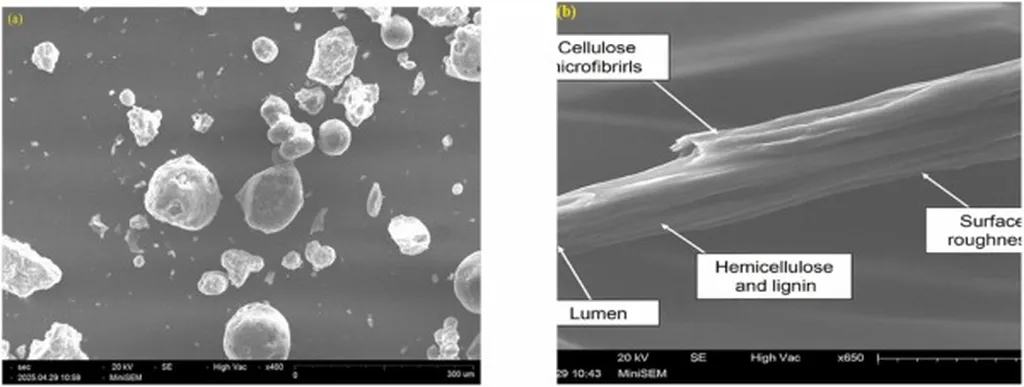In the quest for sustainable construction materials, a team of researchers led by K. Menaka from the Department of Civil Engineering at SRM Institute of Science and Technology in India has made a significant stride. Their work, published in *Case Studies in Construction Materials* (which translates to *Case Studies in Building Materials*), explores the potential of combining palm oil fuel ash (POFA) and kenaf fibers to create high-strength, eco-friendly concrete. This research could have profound implications for the energy sector, particularly in reducing the environmental footprint of construction projects.
The study focuses on the mechanical properties and sustainability of concrete reinforced with natural fibers. Menaka and her team partially replaced cement with 20% POFA and introduced kenaf fibers at varying dosages and lengths. The results were promising: a 5% increase in compressive strength, a 30% boost in split tensile strength, a 31% improvement in flexural strength, and a remarkable 76.4% enhancement in impact resistance compared to conventional concrete.
Menaka emphasized the importance of these findings, stating, “The incorporation of kenaf fibers, particularly at a length of 20mm, significantly improved the structural integrity of the concrete. This is a game-changer for sustainable construction, offering a cost-effective and environmentally friendly alternative to traditional materials.”
The research employed advanced techniques such as Scanning Electron Microscopy (SEM), X-ray Diffraction (XRD), and Fourier-Transform Infrared Spectroscopy (FTIR) to analyze the microstructural characteristics of the concrete. These analyses revealed strong fiber-matrix bonding, fewer microcracks, and well-formed hydration products, all contributing to the enhanced mechanical performance.
One of the most compelling aspects of this study is the use of Response Surface Methodology (RSM) for predictive modeling. This approach allows for the optimization of mix designs, ensuring that the concrete meets specific strength and durability requirements. Menaka noted, “RSM enhances our ability to fine-tune the mix design, making it easier to achieve the desired properties while minimizing waste and cost.”
The commercial implications for the energy sector are substantial. As the demand for sustainable construction materials grows, the adoption of natural fiber-reinforced concrete could reduce the reliance on traditional, energy-intensive materials like cement. This shift could lead to lower carbon emissions and a smaller environmental footprint for construction projects, aligning with global efforts to combat climate change.
Looking ahead, this research paves the way for further exploration into the use of natural fibers and industrial by-products in construction. Menaka and her team’s work highlights the potential for innovation in the field, offering a blueprint for future developments that prioritize sustainability and performance.
As the construction industry continues to evolve, the integration of natural fibers and alternative materials will play a crucial role in shaping a more sustainable future. Menaka’s research is a testament to the power of innovation and the potential for transformative change in the way we build.

